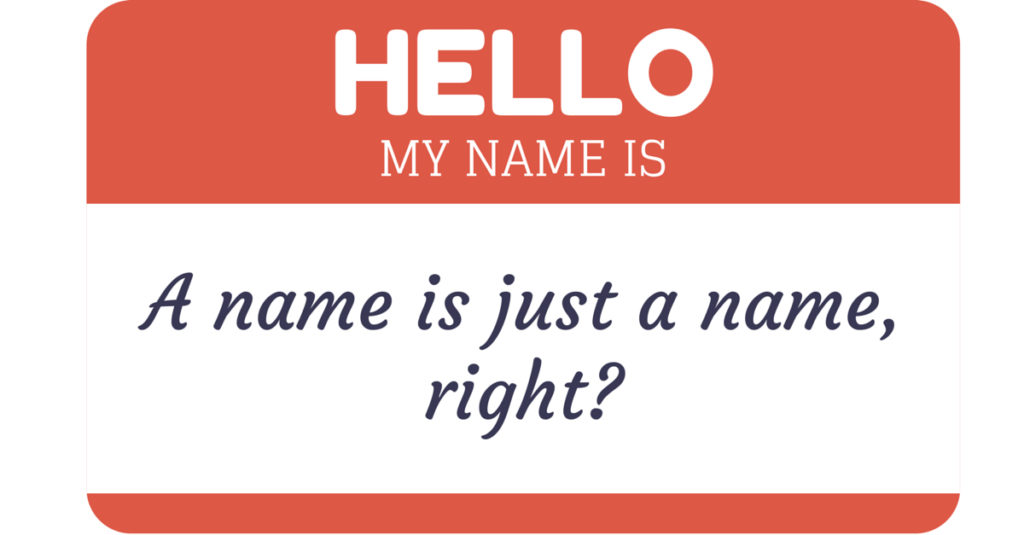The How-To-Name Game
February 07, 2019
A rose by any other name would still smell as sweet, no doubt. Unfortunately, the same is not true for your business, brand, products or solutions. There are some hilarious examples of companies who missed the mark. There are also some very interesting stories of companies that changed their name somewhere along the line.
Amazon started off as “Relentless” and then became “Cadabra” until someone got spooked out by it sounding too much like “Cadaver.” 7-11 started off as “Tote’m,’ and changed their name to reflect their new hours in 1946. Panera started off as “St. Louis Bread Company,” but the name was changed before launching nationally. Panera did it the right way: they used market research to settle on a name. Panera grew in value from $23 million in 1993 to $7.5 billion 2017. You can’t argue with that kind of success.
Naming Research is Worth the Fuss
There are very few companies that work in a market with no competition. Therefore, eeking out any sort of advantage is a big deal. Having a great name could mean the difference between success and failure. The right product and business name provides three distinct advantages:
- It’s easier to sell your products and services.
- A good name serves as a free advertisement.
- It will help your brand grow and thrive.
The odds of success aren’t in your favor. Just making it to the point where you have something ready for a go-to-market push is a huge win. It’s hard enough just to get to the starting line. However, 80% of product launches fail to meet their original objectives. Only 3% of new consumer packaged goods hit the benchmark of a highly successful launch. Product launches are much more likely to succeed if the name helps generate brand recall.
Arriving at a name that will create a winning product takes some elbow grease. The great news is that consumers who are able to provide feedback when it comes to naming products will rate them more favorably. They are also more likely to purchase. Even better news, the process of getting name feedback may create some insights elsewhere in your marketing program. It always pays off to keep the customers’ sentiments front and center.
The How-To Part
Crafting a new name for any entity takes creativity, thoughtfulness, and high-quality research. You and the team need to be very open-minded about the results. You may be facing a headwind due to some early submissions from important people, so take care in the approach, survey design and results interpretation.
Step 1: Craft Potential Names
Do some seriously fun brainstorming. Create a diverse team, and utilize an appropriate brainstorming framework to get those ideas on the table. Put everything on the wall that you can, and then begin to whittle down the list.
The team should utilize an assortment of common naming tactics when providing suggestions:
- Descriptive words (chapsticks, post-its)
- Real words (Air Jordan, Magic Eraser)
- Made up words (Doritos, Sharpie, Frisbee)
- Blended words (iPhone, McNuggets, Nyquil)
- Misspelled (Kleenex, Froot Loops, HedBanz)

Step 2: Whittle Down to 3 – 15 Names
You’re aiming for a short list of 3 – 15 potential names. The number of names fielded will be contingent on resources (including getting enough responses). Narrowing them down may or may not be challenging.
You can cross off any word that falls into one of these three buckets:
- Internal jargon. Buzzwords, acronyms and terms that only mean things to employees are bad.
- Too clever by half. Be clear over clever. Not everyone shares your rapier-like wit.
- Locally appropriate. Make sure your names are appropriate for international audiences.
With the list that is left, evaluate the names against these qualities.
- Is the name easy to remember?
- Is it memorable?
- Does it have positive associations?
- Is it easy to pronounce and read?
- Is the name easy to understand?
Step 3: Design and Field Your Study
The final step is to ask your potential customers to rate your names against several factors such as appeal or relevance. You’ll arrive at the best overall name, and one that ranks best against any given success factor.
The survey must be designed in a way to determine the respondents’ favorite names as well as ranking each name against your success factors. Make sure there are opportunities for them to provide open-ended feedback and some of their own name suggestions. It is also important to gauge their intent to consider or purchase the product.
We Can Help
Improve your odds of market success be making the best possible first impression. If you need an experienced research consultant to help you design a survey or help with a go-to-market campaign, get in touch with us. We’d love to help you succeed.
